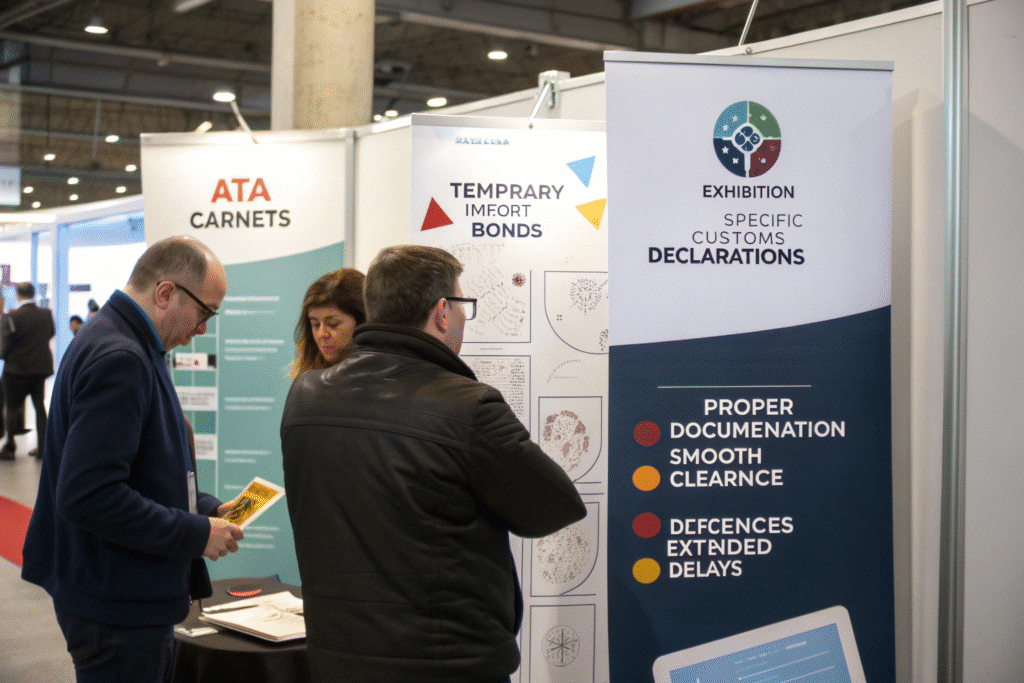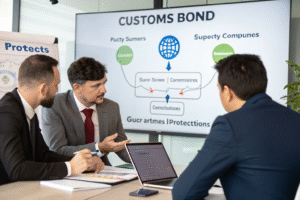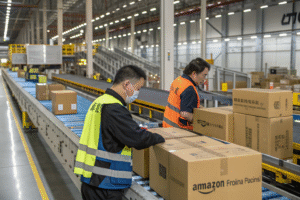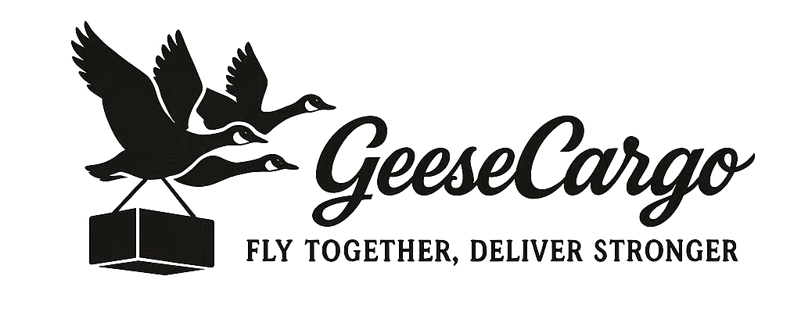When our client's $250,000 exhibition booth got stuck in customs 48 hours before Europe's largest tech show, we learned firsthand that trade show logistics requires military-level precision. As founder of GeeseCargo, I've managed logistics for over 300 international exhibitions and learned that success depends on treating your trade show shipment as a precision operation rather than standard freight. The margin for error is zero when your entire marketing investment depends on materials arriving on time.
International trade show logistics requires specialized documentation, precise timing, customs strategy, and on-site coordination. Successful exhibitors begin planning 4-6 months in advance, use experienced exhibition freight forwarders, and build contingency plans for every critical milestone. The process differs fundamentally from standard commercial shipping in documentation, timing, and handling requirements.
Trade show logistics represents one of the most complex supply chain challenges, combining tight deadlines, high-value goods, temporary import requirements, and intense pressure. Understanding the complete process prevents catastrophic failures that can destroy your trade show investment.
What Are the Critical Timeline Milestones for Success?
Trade show logistics operates on an unforgiving timeline where being "mostly on time" equals complete failure. Working backward from the exhibition date creates a disciplined planning framework.

What Planning Should Occur 4-6 Months Before the Event?
Venue research identifies specific delivery requirements, restrictions, and union rules. Each exhibition center has unique receiving procedures, delivery windows, and material handling equipment requirements that significantly impact logistics planning.
Supplier selection for exhibition freight forwarders with specific trade show expertise. General freight forwarders typically lack the specialized knowledge for ATA carnets, temporary imports, and exhibition customs procedures that experienced providers offer.
Budget development accounts for hidden costs like drayage, material handling, and overtime labor. Exhibition logistics typically costs 2-3 times standard shipping due to specialized handling, tight deadlines, and additional services required.
What Shipping Decisions Must Be Made 2-3 Months in Advance?
Transportation mode selection balances cost against reliability and timing. Air freight provides speed but costs 4-5 times sea freight, while sea freight requires 8-10 week lead times and carries schedule risk.
Consolidation strategy determines whether to ship complete exhibits together or in phased shipments. Consolidated shipping simplifies tracking but creates single points of failure, while phased shipping provides redundancy at higher cost.
Documentation preparation begins for temporary import documents like ATA carnets. These documents require 3-4 weeks for processing and must list every item with detailed descriptions and values.
What Documentation and Customs Strategies Prevent Delays?
Exhibition shipments face heightened customs scrutiny due to their temporary nature and high-value contents. Proper documentation is the difference between smooth clearance and exhibition disaster.

How Do ATA Carnets Simplify Temporary Imports?
ATA carnets serve as passports for commercial samples, professional equipment, and exhibition goods across 87 countries. The carnet eliminates value-added taxes and duties for temporary imports by providing a financial guarantee for potential duties.
Carnet preparation requires itemized listing of all exhibition materials with serial numbers, values, and countries of origin. The document must be validated by local chambers of commerce before international use, requiring careful advance planning.
Carnet management continues through the exhibition and return shipment. Each border crossing requires carnet validation, and failure to re-export goods or obtain proper certification can trigger substantial financial penalties.
What Additional Documentation Supports Smooth Customs Clearance?
Detailed packing lists must match physical contents exactly with harmonized system codes. Customs authorities frequently inspect exhibition shipments, and discrepancies between documentation and actual contents create immediate holds.
Proof of exhibition participation from event organizers confirms the shipment's legitimate purpose. Exhibition badges, booth contracts, and invitation letters help demonstrate that goods are for temporary exhibition rather than permanent import.
Commercial invoices for any giveaways or sales items requiring permanent import. While exhibition materials may enter temporarily, promotional items intended for distribution typically require full import procedures and duty payment.
How Should You Prepare and Package Exhibition Materials?
Exhibition materials face more handling in a few days than standard shipments experience in years. Proper preparation prevents damage that can destroy your exhibition presence.

What Packaging Standards Protect Valuable Exhibits?
Custom crating provides maximum protection for fragile or high-value components. Professionally built crates with shock absorption, moisture protection, and secure fastening systems prevent damage during the multiple handlings exhibition materials experience.
Clear labeling using international symbols and local language instructions. Labels should indicate orientation, fragility, and handling requirements using both text and universally understood symbols to accommodate diverse labor forces.
Modular design enables partial setup if components are delayed or damaged. Designing exhibits with standalone modules ensures your booth remains functional even if specific elements encounter shipping problems.
How Can You Streamline Setup and Dismantling Processes?
Photographic documentation of proper assembly provides visual guidance for local crews. Detailed setup photographs from multiple angles help unfamiliar workers assemble complex exhibits correctly without your supervision.
Component numbering systems match physical pieces to assembly instructions. Clear numbering that corresponds to step-by-step instructions prevents confusion and speeds the setup process, particularly with language barriers.
Tool kits and spare parts travel with the shipment to address minor issues. Including basic tools, fasteners, and common replacement parts prevents small problems from becoming major obstacles during setup.
What On-Site Logistics Require Coordination?
The logistics challenge continues once shipments arrive at the exhibition venue. On-site coordination determines whether careful planning translates into successful execution.

How Do You Manage Advance Warehouse and Direct Shipping?
Advance warehouse shipping arrives 1-3 weeks before the exhibition for storage until move-in. This approach provides buffer time for customs clearance but incurs storage fees and requires precise coordination with the general contractor.
Direct-to-site shipping arrives during the move-in period for immediate setup. This method avoids storage costs but carries significant risk if delays occur, potentially missing the entire setup window.
Hybrid approaches ship critical elements early with less essential components arriving directly. This balanced strategy ensures basic functionality while optimizing costs and managing risk.
What On-Site Services Require Advance Arrangement?
Drayage services move materials from the loading dock to your booth space. These services are typically mandatory through exclusive providers and require advance scheduling with precise timing windows.
Labor coordination ensures qualified workers are available for setup and dismantling. Many venues require union labor for specific tasks, with complex rules about what exhibitors can handle themselves versus what requires local workers.
Utilities and services installation including electricity, internet, and plumbing must be ordered weeks in advance. Last-minute requests typically incur substantial premium charges or may be completely unavailable.
What Contingency Planning Prevents Catastrophe?
Despite meticulous planning, exhibitions face numerous potential disruptions. Comprehensive contingency planning transforms disasters into manageable inconveniences.

What Shipping Contingencies Protect Against Delays?
Staggered shipments provide redundancy if primary shipments encounter problems. Shipping critical components via different routes or carriers ensures that partial functionality remains possible even with major delays.
Critical component carry-on for absolutely essential items. Bringing key presentation materials, samples, or electronic devices as checked luggage provides guaranteed availability regardless of freight shipping problems.
Local rental options for essential equipment like displays, furniture, and electronics. Identifying local rental providers in advance creates backup options if shipped equipment fails to arrive or becomes damaged.
What On-Site Problem Resolution Strategies Work Best?
On-ground contacts with local language capability and problem-solving authority. Having dedicated resources at the destination enables rapid response to customs issues, carrier problems, or venue challenges.
Emergency budget allocation for premium services when problems occur. Setting aside 15-25% of the logistics budget for unexpected expenses provides flexibility to pay for expedited services, additional labor, or replacement materials.
Documentation copies accessible digitally from any location. Cloud-based access to all shipping documents, contacts, and procedures enables problem resolution even if physical documents are lost or delayed.
Conclusion
International trade show logistics demands precision planning, specialized expertise, and comprehensive contingency preparation. The most successful exhibitors treat their logistics operation with the same strategic importance as their sales and marketing activities, recognizing that the best exhibition strategy fails if materials don't arrive on time and in perfect condition.
At GeeseCargo, we've developed a systematic approach to exhibition logistics that has delivered 99.7% on-time performance across hundreds of international events. The process begins with understanding that exhibition logistics differs fundamentally from standard commercial shipping in timing, documentation, and handling requirements.
Begin your next exhibition planning with a clear timeline working backward from the event date, identifying critical milestones for decision-making and shipping. Partner with exhibition logistics specialists rather than general freight forwarders, and always build redundancy into your shipping strategy. Remember that in exhibition logistics, the cost of prevention is always lower than the cost of failure—both financially and in missed opportunity.









